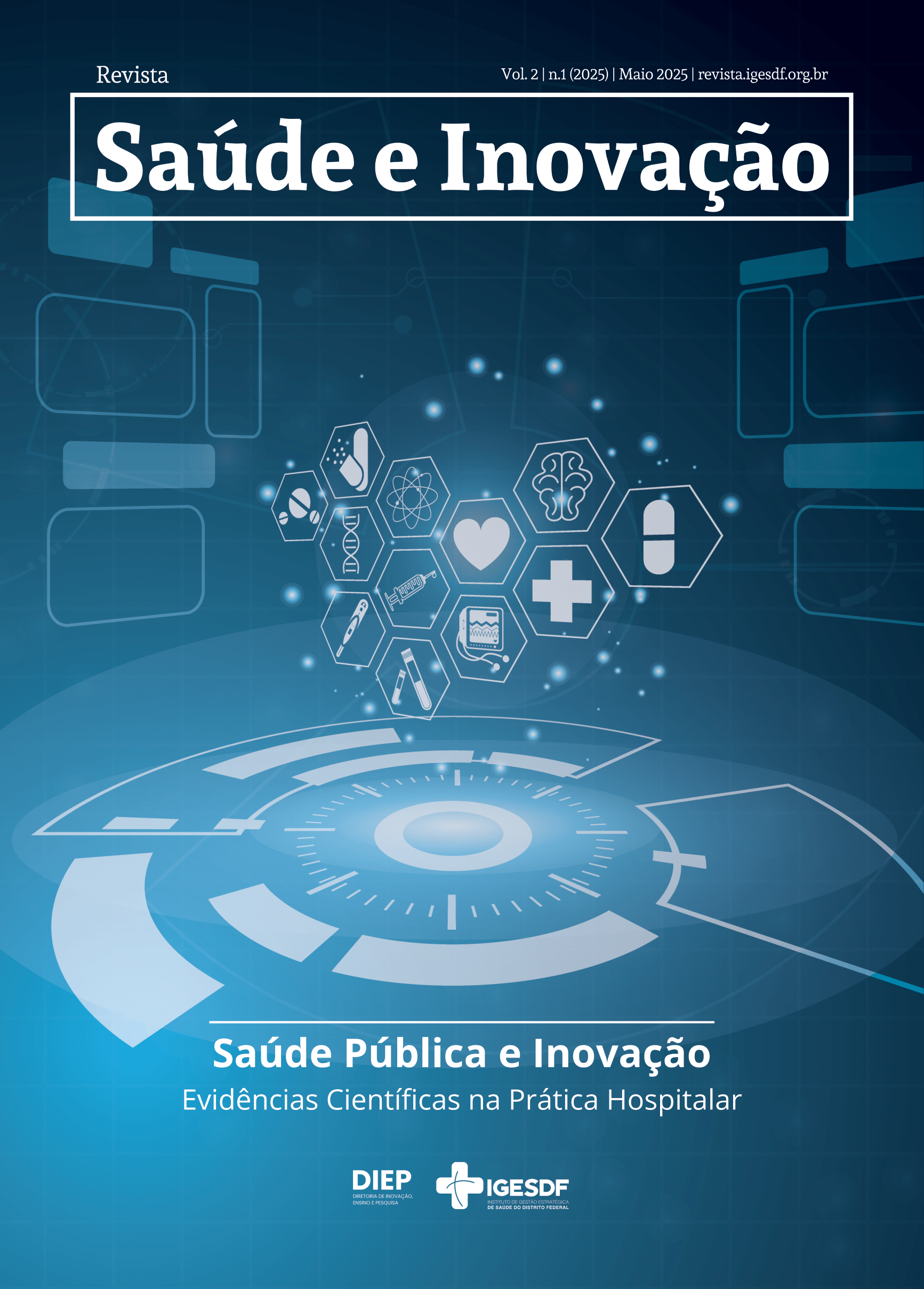Portugues Portugues
DOI:
https://doi.org/10.51208/saudeinovacao.v2i1.64Keywords:
Neutropenia febril, Tratamento empírico, Antifúngicos, Onco-hematologia, ProtocoloAbstract
Introduction: Febrile Neutropic (NF) is a typical and frequent cytotropic, and may be a symptom of oncohematology after a cycle of chemotherapy. Most infectious diseases cannot be determined, with the main symptom being of unknown origin. Empirical antifungal therapies are initiated in cases of NF due to severe infection. Objective: To describe the profile of patients diagnosed with NF, the most used antifungals including time of onset and duration, and the most prevalent fungi in the oncohematology unit of a tertiary hospital in the Federal District. Method: Retrospective, descriptive, observational and detailed methodological approach, developed in a tertiary hospital in the Federal District. Data for the year 2020 were collected from all patients who used antifungals in the oncohematology unit diagnosed with febrile neutropenia. Results: A total of 97 patients were obtained, 43 had a diagnosis of febrile neutropenia. Among the antifungals that stood out in empirical use were: fluconazole (83.7%), voriconazole (60.5%) and anidulafungin (34.9%). Among the previous bril patients with neutropenia, 95.34% underwent anticancer chemotherapy in the surgery at diagnosis. Conclusion: The profile of antifungal drugs is in accordance with the literature being the first line of treatment, however in our study the azole class was predominant. This study determines the predominant profile of patients who evolved with male NF, diagnosed with AML, previous treatment with chemotherapy and with comorbidities.
References
Ferreira, J.N. et al. Managing febrile neutropenia in adult cancer patients: an integrative review of the literature. Revista Brasileira de Enfermagem. 2017;70(6):1301-8.
Pereira,M.A. et al. Neutropenia Febril. Acta médica. Porto Alegre. 33(1): [6], 21 dez. 2012.
Pasqualotto, A.C. Neutropenia Febril. Revista. Brasileira de Oncologia Clínica 2004. Vol. 1 .N.º 3 (Set/Dez) 9-21
O'Brien, C.,Dempsey, O.,Kennedy, M.J. Febrile neutropenia risk assessment tool: improving clinical outcomes for oncology patients.Eur J OncolNurs. 2014 Apr;18(2):167-74.
Holtan SG, Majhail NS, Weisdorf DJ. Complications After Hematopoietic Cell Transplantation. In Hematology: Basic Principles and Practice. Elsevier Inc. 2018. p. 1669-1684.e2
Instituto Nacional do Câncer – INCA Disponível em: https://www.inca.gov.br/sites/ufu.sti.inca.local/files//media/document//estimativa-2020-incidencia-de-cancer-no-brasil.pdf
Madran, B. et al. Implementation of an antimicrobial stewardship program for patients with febrile neutropenia. American journal of infection control, 46(4), 420–424.2018.
Toro, et al. Febrile neutropenia in patients with hematological malignancies at a reference center in Colombia. Salud, Barranquilla. Vol.35 no.2. May/Aug. 2019.
Garcia, R.C.L. et al.Neutropenia Febril: Abordagem diagnostica e terapêutica. Acta medica vol, 39. N. 2 (2018).
Cantwell & Perkins et al. Infectious Disease Emergencies in Oncology Patients. Emergencies Medicine Clinics, Vol 36, capt 4. P795-810.2018
Llhamas. J.R.R. Neutropenia Febril: el punto de vista del hematologo. Gaceta Mexicana de Oncología. 2016;15(4):212---221.
Marchetti, O., Cordonnier. C., Calandra,T. Empirical antifungal therapy in neutropenic cancer patients with persistent fever.EJC SUPPLEMENTS 5. PG 32 – v4/2. 2007.
Cornelius, J. Clancy, E M. Hong, N.Princípios e Prática de Doenças Infecciosas de Mandell, Douglas e Bennett.Capítulo 40, 509-514.e3, 2007.
Araujo, MRE. Hemocultura: recomendações de coleta, processamento e interpretação dos resultados. J Infect Control 2012; 1 (1): 08-19.
Bellesso.M et al. Triagem para tratamento ambulatorial da neutropenia febril. Rev.Bras. Hematol. Hemoter. 32 (5).
Downloads
Published
Issue
Section
License
Copyright (c) 2025 Jenyffer Ribeiro Rosa

This work is licensed under a Creative Commons Attribution-NonCommercial-NoDerivatives 4.0 International License.
Os autores declaram aceitar a política de direito autoral praticada pela revista. A submissão de originais para a Revista Saúde e Inovação implica na transferência, pelos autores, dos direitos de publicação impressa e digital. Os direitos autorais para os artigos publicados nesta revista são do autor, com direitos da revista sobre a primeira publicação. Os autores somente poderão utilizar os mesmos resultados em outras publicações indicando claramente a Revista Saúde e Inovação como o meio da publicação original. Em virtude de tratar-se de um periódico de acesso aberto, é permitido o uso gratuito dos artigos, principalmente em aplicações educacionais e científicas, desde que citada a fonte. A Revista Saúde e Inovação adota a licença Creative Commons Atribuição 4.0 Internacional (CC BY 4.0): https://creativecommons.org/licenses/by/4.0/deed.pt_BR

 A
A 